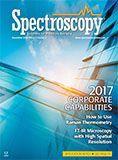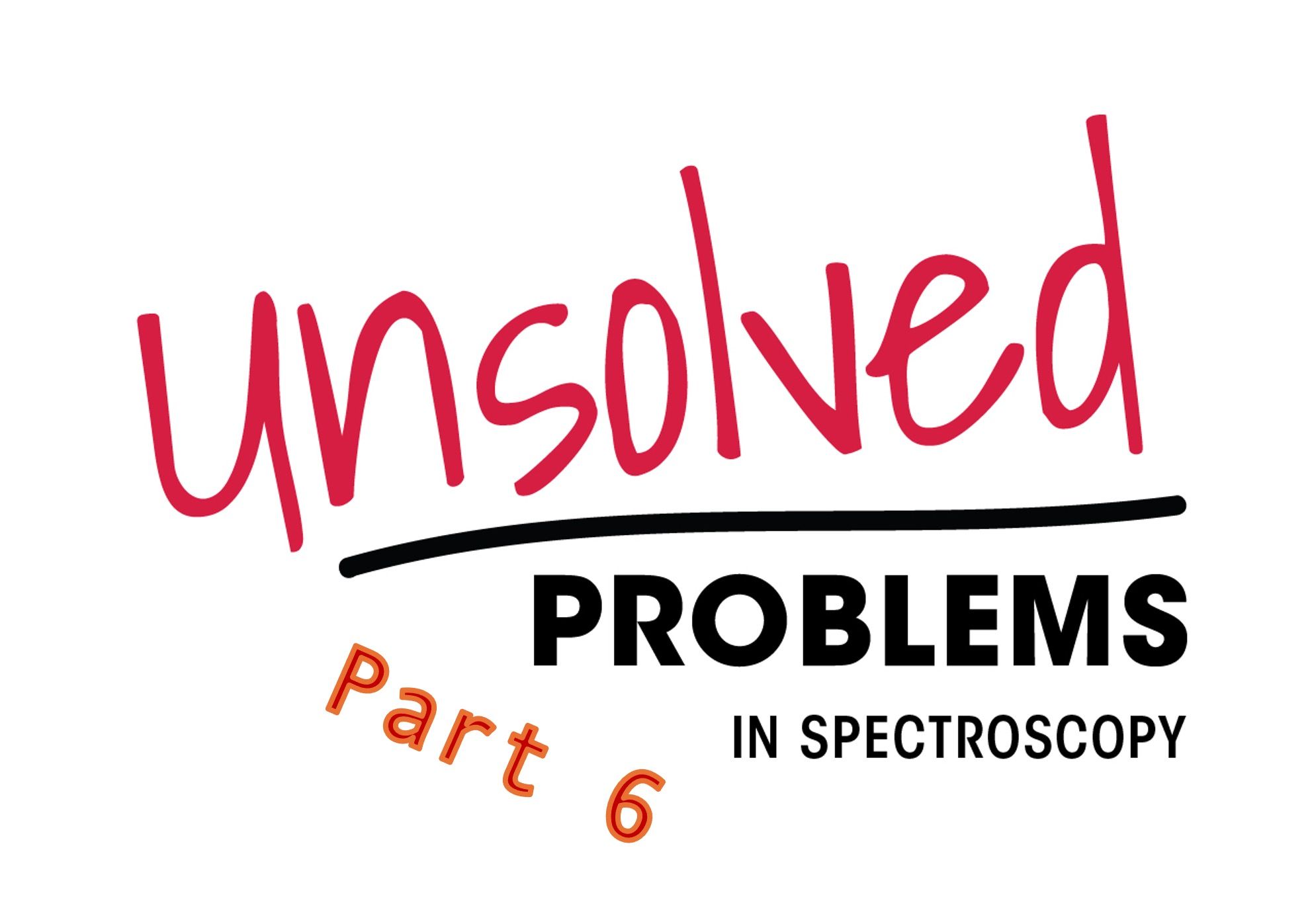Article
Spectroscopy
Spectroscopy
FT-IR Microscopy with High Spatial Resolution
Advances in spatial resolution for Fourier transform infrared (FT-IR) imaging historically have involved the use of a synchrotron source, but new optics have been developed that yield better spectral quality and spatial resolution than are provided by existing synchrotron sources. Kathleen Gough, Professor in the Department of Chemistry at the University of Manitoba, has been working with her group to conduct diagnostic tissue imaging with the new thermal source FT-IR system. She recently spoke to us about these efforts.
Advances in spatial resolution for Fourier transform infrared (FT-IR) imaging historically have involved the use of a synchrotron source, but new optics have been developed that yield better spectral quality and spatial resolution than are provided by existing synchrotron sources. Kathleen Gough, Professor in the Department of Chemistry at the University of Manitoba, has been working with her group to conduct diagnostic tissue imaging with the new thermal source FT-IR system. She recently spoke to us about these efforts.
Your group has been working on an approach for imaging with FT-IR microscopy in which high numerical aperture objectives and new magnification optics, along with a thermal source spectrometer, provide imaging capabilities comparable to the highest synchrotron source imaging capability yet demonstrated (1). How does the spatial resolution obtained using this approach compare with that of previous FT-IR microscopy techniques, and what is the significance of this advancement?
FT-IR microscopy has a long history. The first IR microscopes were built over 60 years ago, and were designed for dispersive infrared spectrometers. These pioneers managed some amazing results but, as with most infrared work, nothing took off until FT-IR entered the mainstream. Detection limits for far-field infrared are governed by the wavelength-dependent Abbe limit, but the first instruments did not begin to approach this. Generally, there was a single-element detector, and the target region was set by adjusting a physical aperture. If the sample was situated on a motorized stage, an area could be mapped by raster scanning, collecting individual spectra at each pixel. The pixels gradually decreased in size as the technology improved. Eventually, a focal plane array (FPA) of microdetectors became commercially available, enabling the collection of a single image comprising 16 × 16, 32 × 32, 64 × 64, or 128 × 128 pixels. Motorized stages enabled collection of a mosaic of tiles for rapid acquisition of large-area images. An FPA-based instrument was installed at the (now decommissioned) Synchrotron Radiation Center in Madison, Wisconsin, at the IRENI beam line. The high numerical aperture optics and the brilliant synchrotron source combined to allow pixels with a nominal geometric resolution of 0.54 µm. This facility allowed extraordinary imaging capability (1,2), and thus a spectrochemical window onto subcellular chemistry of organelles, cancerous tissues, and stem cells, as well as the composition of layered polymers and other materials. Shortly after this, thermal source FT-IR microscopes, as opposed to synchrotron source FT-IR microscopes, achieved similar capability, by means of additional and modified optics.
To address the second part of your question, the significance is enormous. Infrared spectroscopy provides unique chemical information, in contrast to many other imaging modalities. For example, fluorescence imaging is typically restricted to identification of those specific targets that have been tagged with a reporter molecule, while infrared imaging provides a full chemical image of all the functional groups present. This is extremely important for basic research not just into disease, but also for any materials research. The rich chemical information in the IR spectra can be analyzed in myriad ways with statistical methods tailored to the problem, and it can be combined with results from other methodologies. Many groups are developing applications for spectropathology with the intent of achieving protocols that could be employed in a clinical setting or in a pathology laboratory. (See my answer to the final question.)
How does the modified FT-IR microscopy system differ from a standard system?
Objectives and condensers with high numerical aperture are essential. The thermal source IR microscope has a novel means of increasing the magnification (5× increase) by using extra mirrors within the microscope rather than relying solely on the objective for magnification. Motorized software-controls allow switching of mirrors between standard and high magnification without changing the condenser and objective setting, while maintaining a reasonable working distance of at least 12 mm. The end result is that spectrochemical images can be obtained with a thermal source-that is, in house-at a spatial resolution that is also compatible with the diffraction limit (1). We have even been able to develop 3D FT-IR tomographic imaging, previously achieved only at IRENI. The highest setting on our IR microscope involves 25× objective and condenser with 0.81 NA with which we can attain 0.66 µm pixels. As with the IRENI data, images are oversampled, to the point where spatial image restoration techniques may be applied.
Does the thermal source system have any limitations or disadvantages compared to a synchrotron-based system?
This is a completely subjective response, but I would have to say almost none. An advantage of being at a synchrotron is that there are many other beam lines, and that with some planning, correlative data can be acquired, which can be very powerful. Moreover, the IRENI end station offered the best far-field spatial resolution ever, with over-sampling even at the shortest wavelengths, and rapid data collection owing to the brilliance of the synchrotron illumination. My experience in conducting synchrotron IR imaging has been rewarding and productive. However, it has always required the investment of considerable funds and personnel for travel and data collection, both of which are important considerations in planning research projects. I was extremely fortunate to be able to collaborate with Professor Carol Hirschmugl at the IRENI beam line, where we obtained some fantastic images and were able to gain greater insight into the composition of plaques in Alzheimer-diseased (AD) brain tissue and into the substructure of Arctic sea ice diatoms, two important lines of research in my group. The disadvantage was that data were collected in a limited time frame, and it was not possible to run back into the lab the next week to double check a sample for which the data were noisy or replicates were needed, or different regions had to be imaged-all the usual things that are part of day to day research. The spatial resolution now achievable with a thermal source is essentially as good as at IRENI, given that a practical limit is on the order of 1 µm, with greater convenience for switching between magnification levels and much better working distance. Having the capability to do this kind of research in house, without the constraints of time and travel, is invaluable.
What are the next steps in your research?
For my group, we are continuing to use the high-magnification thermal source FT-IR to study brain tissue from AD and transgenic mouse models, seeking molecular insight into this disease. Collagen studies are ongoing on several tissues, including mechanically damaged tendon, the basement membrane of organs such as kidney, and scar tissue in heart disease. We are pursuing the exciting opportunity to study autecology of diatoms to better understand community interactions of the important taxa in the Arctic marine food web, particularly relevant with regard to global climate change. The high spatial resolution thermal source system can be used to collect tomographic data sets for samples that are on the order of 10–20 µm in diameter; this includes diatoms, synthetic polymer threads, and a few other things. Finally, we are actively pursuing near-field IR techniques (3), by which we can probe regions as small as 20 nm-this is tremendously exciting as the research can be done in a correlative manner along with super-resolution fluorescence imaging.
References
- C.R. Findlay, R. Wiens, M. Rak, J. Sedlmair, C.J. Hirschmugl, J. Morrison, C.J. Mundy, M. Kansiz, and K.M. Gough, Analyst140, 2493–2503 (2015).
- (2) C.J. Hirschmugl and K. M. Gough, Applied Spectrosc.66, 475–491 (2012).
This interview has been edited for length and clarity. To read the full interview, please visit:www.spectroscopyonline.com/ft-ir-microscopy-high-spatial-resolution
Newsletter
Get essential updates on the latest spectroscopy technologies, regulatory standards, and best practices—subscribe today to Spectroscopy.





